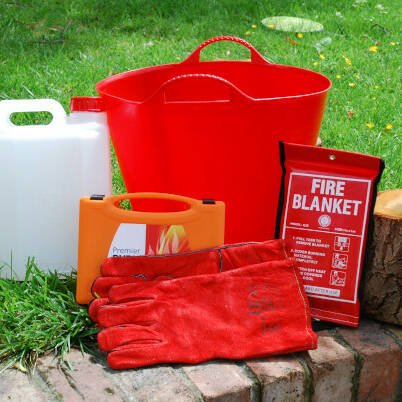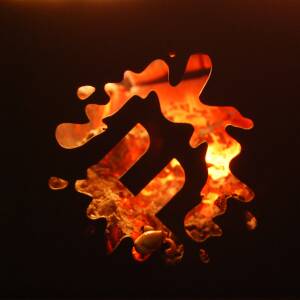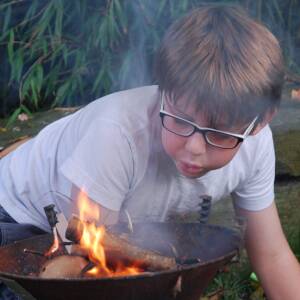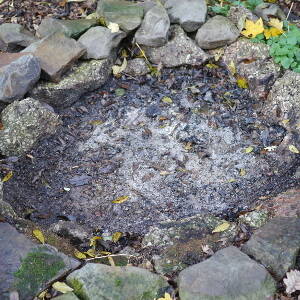Fires: fire pit designs
Pros and cons of a range of different styles & materials for creating your fire pit.
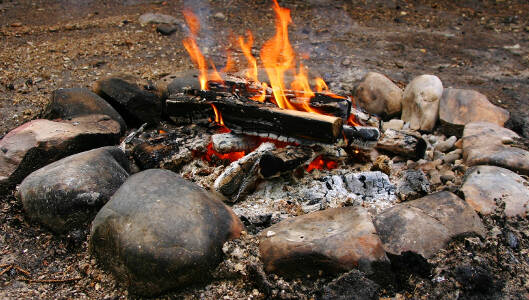
Introduction
An overview of the many different types of fire pit design, and their advantages and disadvantages. Your choice will depend upon your site and the activities you plan to use your fire for.
What you'll need
This activity has been provided by

Useful items from our shop
Environmental Considerations
Consider the environmental impact of preparing, carrying out & completing this activity. Could this impact be reduced? Specific considerations for this activity could include:
Health & Safety Considerations
Follow your usual operating procedures and carry out appropriate risk benefit assessments.
Some considerations particular to this activity include:
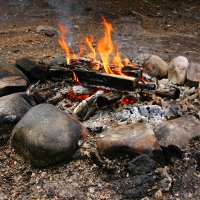
Stones & bricks:
Advantages:
no cost and can be assembled and deconstructed using natural resources available on site.
Disadvantages:
there is potential for ground fires so the material the fire is built on needs to be investigated. Some stones have high water content and can crack with force if heated.
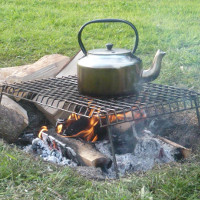
Dug pit:
Advantages:
can be used as a leave-no-trace fire pit. This pit protects the fire from wind.
Disadvantages:
potential for ground fires so the type of soil should be considered. The fire is lower and therefore the cooking area is lower, making it a little harder to access.
Logs:
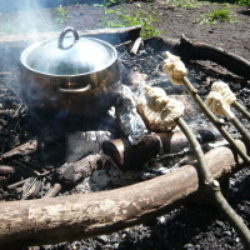
Advantages:
- very quick to assemble and gives a clear boundary to the fire.
Disadvantages:
- the logs can catch on fire – they can smoulder and not obviously be on fire. It is a ground fire so the type of soil needs to be right to prevent spreading underground fires.
Raised pits:
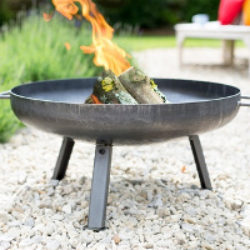
Advantages:
- the fire is off the ground which can make it a better height for cooking and adding fuel. The higher the pit is, the less ground scorching that occurs.
Disadvantages:
- although it is raised it can still cause ground scorching, particularly if the fire is very hot. There is a chance the pit can be knocked and tipped over.
Fire box:
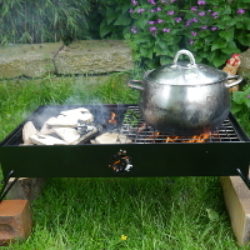
Advantages:
- sturdy foldable pit that can be raised off the ground for ease of access and to prevent ground scorching. It is portable and can be used on sites where ground fires are not allowed/suitable.
Disadvantages:
- has only a low raise so will need to be raised further to prevent ground-scorching.
Ceramic bowl:
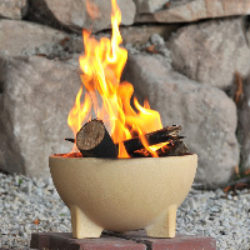
Advantages:
- small, aesthetic, contained fire pit allowing smaller cooking fires.
Disadvantages:
- ceramic material can break. It can be knocked over as only has small stabilising feet.
Scrape pit:
Any flammable material is pushed out of the way and vegetative material scraped away with hands or a spade to allow the fire to sit on the more mineral soil.
Advantages:
quick and easy to set up and requires no resources/cost.
Disadvantages:
the soil needs to be non-flammable, which is not always possible, so extra precautions may need to be taken to prevent ground fires.
Plate (metal/enamel):

Advantages:
- cheap resource ideal for multiple fire-lighting stations. Small and stackable for storage and portability purposes.
Disadvantages:
- designed for fire-lighting and tiny fires, not suitable for a larger/cooking fire. Plate may get hot.
Scallop shell:
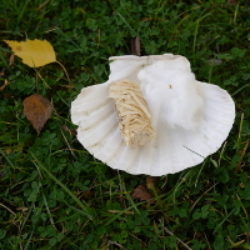
Advantages:
- like the plate, a cheap resource ideal for multiple fire-lighting stations. Small and stackable for storage and portability purposes.
Disadvantages:
- breakable and only suitable for fire-lighting and tiny fires, not suitable for a larger/cooking fire.
Storm kettle base:
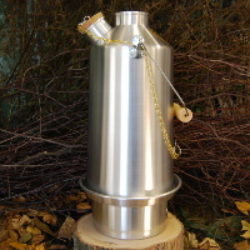
Advantages:
- small and handy for fire-lighting demonstrations, and then can be used to maintain a fire as the kettle heats up.
Disadvantages:
- only suitable for smaller fires – not a practical option for multiple fire-lighting stations.
Disclaimer: Muddy Faces cannot take any responsibility for accidents or damage that occurs as a result of following this activity.You are responsible for making sure the activity is conducted safely.
Key Features
- Age Range All Ages
- Duration Less than an hour
- Location Anywhere
- Season Any
- Time of Day Anytime
-
Categories:
Fire, Shelters & Bushcraft
fire
